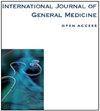沙特阿拉伯西南部 KEL 血型抗原和表型的发生率
IF 2.1
4区 医学
Q2 MEDICINE, GENERAL & INTERNAL
引用次数: 0
摘要
目的:沙特阿拉伯的贾赞省是遗传性血红蛋白病(包括镰状细胞病和地中海贫血症)的高发区,患者需要频繁输血。为降低红细胞异体免疫和溶血性输血反应等风险,确保血液相容性至关重要。Kell(KEL)血型系统与 ABO 和 RH 系统一样重要,包含与这些并发症有关的多种抗原。本研究旨在调查居住在贾赞省的沙特献血者中 KEL 血型抗原(K、k、Kpa 和 Kpb)的频率,并确定 KEL 表型(K/k 和 Kpa/Kpb):本研究共招募了 138 名来自沙特阿拉伯贾赞省穆罕默德-本-纳赛尔王子医院的匿名健康沙特献血者。使用凝胶卡技术对抗凝血进行分析,以评估 K、k、Kpa 和 Kpb 抗原:结果:KEL 抗原的流行率如下:K(9 人,6.52%)、k(137 人,99.28%)、Kpa(1 人,0.72%)和 Kpb(138 人,100%)。观察到的 KEL 表型为 K+k+(n = 8,5.80%)、K+k-(n = 1,0.72%)、K-k+(n = 129,93.48%)、Kp(a+b+)(n = 1,0.72%)和 Kp(a-b+)(n = 137,99.28%):本研究有助于了解沙特阿拉伯贾赞省 KEL 血型抗原和表型的流行情况。这些发现可能有助于建立一个全国性的血型数据库,并指导输血实践,以确保兼容性并最大限度地降低同种异体免疫风险:Kell 血型 输血 免疫血液学 沙特阿拉伯本文章由计算机程序翻译,如有差异,请以英文原文为准。
The Incidences of KEL Blood Group Antigens and Phenotypes in Southwestern Saudi Arabia
Purpose: Jazan Province in Saudi Arabia is notable for its high prevalence of inherited hemoglobinopathies, including sickle cell disease and thalassemia, necessitating frequent blood transfusions for affected individuals. To mitigate risks such as RBC alloimmunization and hemolytic transfusion reactions, ensuring blood compatibility is crucial. The Kell (KEL) blood group system, pivotal alongside the ABO and RH systems, encompasses multiple antigens implicated in these complications. This study aimed to investigate the frequencies of KEL blood group antigens (K, k, Kpa, and Kpb) and determine KEL phenotypes (K/k and Kpa/Kpb) among Saudi blood donors living in Jazan Province.
Methods: A total of 138 anonymous healthy Saudi blood donors from Prince Mohammed bin Nasser Hospital in Jazan Province, Saudi Arabia, were enrolled in this study. Anticoagulated blood was analyzed using the gel card technique to assess K, k, Kpa, and Kpb antigens.
Results: The prevalence of KEL antigens was as follows: K (n = 9, 6.52%), k (n = 137, 99.28%), Kpa (n = 1, 0.72%), and Kpb (n = 138, 100%). KEL phenotypes observed were K+k+ (n = 8, 5.80%), K+k− (n = 1 0.72%), K−k+ (n = 129, 93.48%), Kp(a+b+) (n = 1, 0.72%), and Kp(a−b+) (n = 137, 99.28%).
Conclusion: This study provides insights into the prevalence of KEL blood group antigens and phenotypes in Jazan Province, Saudi Arabia. These findings may contribute to the establishment of a national blood group database and guide transfusion practices to ensure compatibility and minimize alloimmunization risks.
Keywords: Kell blood group, blood transfusion, immunohematology, Saudi Arabia
Methods: A total of 138 anonymous healthy Saudi blood donors from Prince Mohammed bin Nasser Hospital in Jazan Province, Saudi Arabia, were enrolled in this study. Anticoagulated blood was analyzed using the gel card technique to assess K, k, Kpa, and Kpb antigens.
Results: The prevalence of KEL antigens was as follows: K (n = 9, 6.52%), k (n = 137, 99.28%), Kpa (n = 1, 0.72%), and Kpb (n = 138, 100%). KEL phenotypes observed were K+k+ (n = 8, 5.80%), K+k− (n = 1 0.72%), K−k+ (n = 129, 93.48%), Kp(a+b+) (n = 1, 0.72%), and Kp(a−b+) (n = 137, 99.28%).
Conclusion: This study provides insights into the prevalence of KEL blood group antigens and phenotypes in Jazan Province, Saudi Arabia. These findings may contribute to the establishment of a national blood group database and guide transfusion practices to ensure compatibility and minimize alloimmunization risks.
Keywords: Kell blood group, blood transfusion, immunohematology, Saudi Arabia
求助全文
通过发布文献求助,成功后即可免费获取论文全文。
去求助
来源期刊

International Journal of General Medicine
Medicine-General Medicine
自引率
0.00%
发文量
1113
审稿时长
16 weeks
期刊介绍:
The International Journal of General Medicine is an international, peer-reviewed, open access journal that focuses on general and internal medicine, pathogenesis, epidemiology, diagnosis, monitoring and treatment protocols. The journal is characterized by the rapid reporting of reviews, original research and clinical studies across all disease areas.
A key focus of the journal is the elucidation of disease processes and management protocols resulting in improved outcomes for the patient. Patient perspectives such as satisfaction, quality of life, health literacy and communication and their role in developing new healthcare programs and optimizing clinical outcomes are major areas of interest for the journal.
As of 1st April 2019, the International Journal of General Medicine will no longer consider meta-analyses for publication.
 求助内容:
求助内容: 应助结果提醒方式:
应助结果提醒方式:


